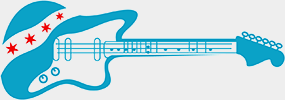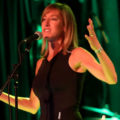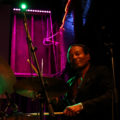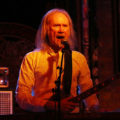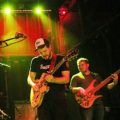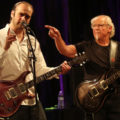Progtoberfest scores Soft Machine 44 years since visiting America, Theo Travis reveals the “Hidden Details”
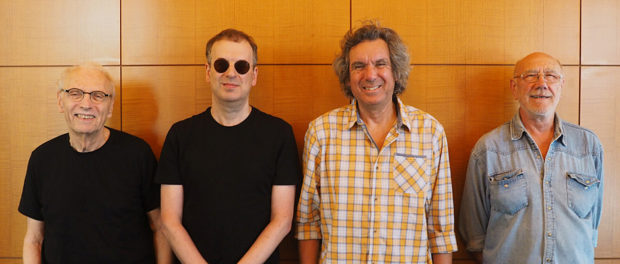 Photo provided by Naoju Nakamura
Photo provided by Naoju Nakamura
Canterbury’s Soft Machine was amongst the earliest bands to merge psychedelic sounds, progressive rock and jazz fusion in the back half of the 1960s, and while it never ascended to the commercial heights of say a Pink Floyd from the same period, a case could be made for similar importance, at least as far as the underground is concerned. Nowadays, the group consists of guitarist John Etheridge, saxophone/flute/electric piano player Theo Travis, bassist Roy Babbington, drummer John Marshall, and for a Progtoberfest IV headlining slot at Reggies Chicago on October 21, a guest appearance by fellow beat keeper Gary Husband.
The occasion marks the act’s first North American tour since 1974, unveils the brand new recording “Hidden Details” and just so happens to coincide with its 50th anniversary, making this absolutely essential for anyone even remotely aware of its distinguished place in experimental musical culture to attend. Find out more from Travis, who’s steadily becoming a prog god thanks to time in Soft Machine and his many Travis & Fripp collaborations with King Crimson’s Robert Fripp, in an educational conversation with Chicago Concert Reviews.
 What accounted for such a lengthy gap since Soft Machine last toured North America?
What accounted for such a lengthy gap since Soft Machine last toured North America?
Theo Travis: A combination of logistics and finance made it not viable. Also, the Soft Machine Legacy tag was less attractive. There is a lot of interest in the new album and the band at moment, so now is the right time.
What’s on tap during the Progtoberfest performance?
Travis: Well the band is in great form. We play a mixture of tracks from the new album, “Hidden Details,” and older Soft Machine tunes – many being classics. We cover tunes going all the way back to the “Third” album, as well as pieces from “Bundles, “Softs,” “Fourth” and others. It is a great mix and we hope people will really enjoy it all.
Speaking of progressive rock in general, you’re often cited as one of the genre’s earliest acts. What was it like breaking ground so to speak back in the late 1960s long before it was an established style?
Travis: None of us were in the band in the late 1960s so I cannot answer that. Members of the band go back to 1972 and 1973, which is 46 years ago. That is pretty cool.
Does it bother you that the band never crossed over commercially and was mostly regarded underground?
Travis: Not really. That has its own benefits and we have all been involved in lots of interesting and great music outside Soft Machine too.
 How would describe the group’s vision on the “Hidden Details” album?
How would describe the group’s vision on the “Hidden Details” album?
Travis: Eclectic, emotional, cinematic, powerful, imaginative, psychedelic, experimental, beautiful.
The project releases exactly 50 years since the band’s debut “The Soft Machine.” Walk us through your musical evolution from then until now.
Travis: It would take a book to answer that fully! But briefly the band has had various different periods [starting with] late 1960s psychedelic pop with strong jazz influence. [Next came] the classic period since Elton Dean joined with experimental electric jazz, freeform improvisation, longform compositions and tape loops, plus some great tunes. [Then] jazz rock with Karl Jenkins as the main composer, and [now] the current line-up, which incorporates all of those various elements in a way that’s never been as broad and wide-ranging before.
Outside of live and compilation albums, this also marks the first since studio recording since 1981. To what extent have the technological developments that took place since then helped shape Soft Machine’s sound?
Travis: Considerably. Music technology has developed hugely since then. Personally I use a lot of live looping techniques, for example, on the alto flute on “Breathe,” the effects on the Fender Rhodes piano and the live sample looping and processing on “Out Bloody Intro.” That intro relates to the intro on “Third,” but unlike in 1970 when it would have been done with tape loops and prepared recording techniques, for this album it was all done live using looping pedals and an iPad.

Photo provided by Geoff Dennison
Travis: Different musicians have different fans and they all add to the whole. Some of them would be Daevid Allen, Robert Wyatt, Allan Holdsworth, Hugh Hopper, Karl Jenkins, John Marshall…All huge musical talents. [Even Andy Summers, who went on to join The Police, was briefly involved, Cream’s Jack Bruce appeared on a session and Jimi Hendrix once jammed with the band].
What plans does Soft Machine have following the “Hidden Details” season?
Travis: We enjoy performing live and touring, so we hope to do more. The response to the new album has been great, so we want to build on that, and for more people to hear our music.
Soft Machine performs at Reggies Chicago for Progtoberfest IV on Oct. 21. For additional details, visit SoftMachine.org and ReggiesLive.com/Show/Progtoberfest-IV/.
